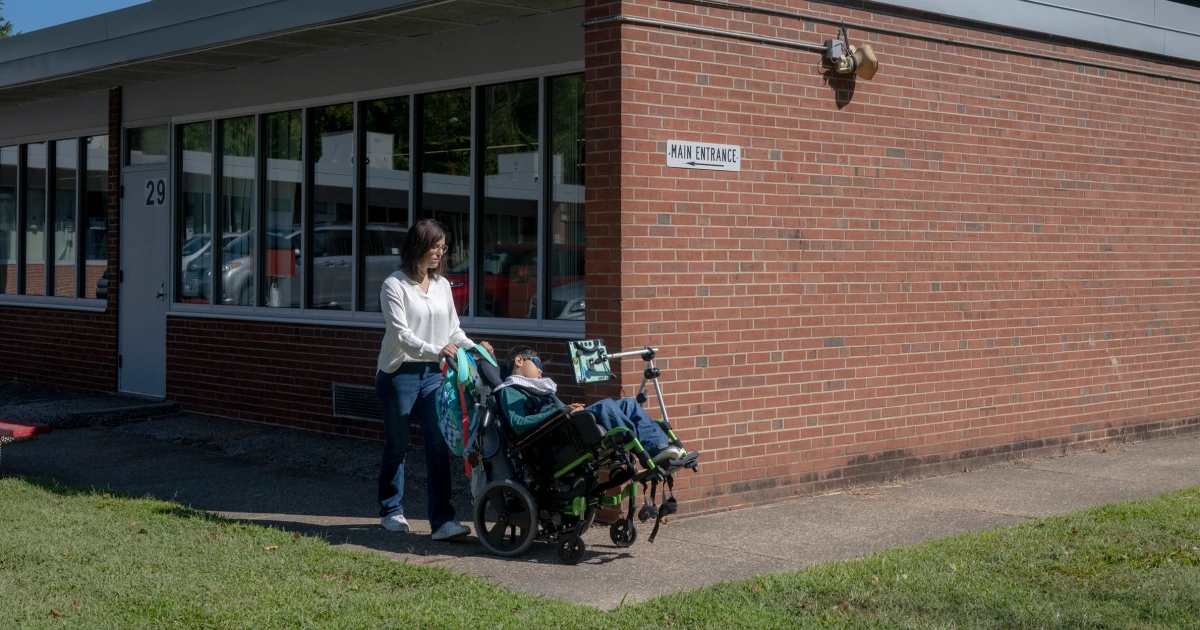By Aliss Higham
Copyright newsweek

New Mexico is implementing free child care across the state—the first to do so—but how is it being paid for?Why It MattersStarting November 1, families across New Mexico will no longer face income restrictions or co-payments for child care assistance. The sweeping change makes the state the first in the country to provide no-cost care to every household, regardless of earnings, and could save families thousands of dollars in costs.What To KnowDemocratic Governor Michelle Lujan Grisham and the Early Childhood Education and Care Department (ECECD) estimate the shift will save families about $12,000 per child each year. Officials also say the state is preparing to expand available slots and increase wages for child care providers so the system can absorb higher demand.Previously, New Mexico’s program was capped at families making up to 400 percent of the federal poverty line—roughly $124,000 for a family of four. That limit will now be removed, creating universal eligibility.According to the governor’s office, families who have already used the program report that support like this allows them to feel more financially secure, spend additional time with their children, and choose better-quality providers. “Now, every family in New Mexico will have the same opportunity,” the statement said.However, Republicans in New Mexico have decried the change, saying it offers a hand up to already wealthy residents and increases “government dependency.”How Will Free Child Care Be Funded?The road to free child care was first paved in 2019, when New Mexico lawmakers created the dedicated Early Childhood Education and Care Department. The next year, the governor set up the Early Childhood Education and Care Fund with an initial $320 million deposit from surplus oil and gas revenues and federal mineral leases. That fund was expected to grow to $1 billion within a decade, but has already reached nearly $10 billion.Annual interest from the fund provides the department with at least $500 million a year, and additional dollars will soon flow in from the state’s Land Grant Permanent Fund, a reserve also backed by oil and gas revenue.Voters approved tapping that fund in 2022, directing $178.7 million to early childhood programs in fiscal year 2026 and $197.6 million the following year.Its ongoing cost—$120 million per year, according to the Washington Post—will require approval next year by the state legislature.What People Are SayingMichelle Kang, president and CEO of the National Association of the Education of Young Children, said: “By prioritizing public investments in early childhood educators, families, and children, New Mexico continues to lead the way in building a sustainable, affordable, and quality child care and early learning system that helps its communities and economy thrive.”Achieving universal child care will make a huge difference for the state’s children, families, businesses, and educators—and for all of us, by showing that it can be done.”ECECD secretary Elizabeth Groginsky said: “By providing universal access and improving pay for our early childhood workforce, we are easing financial pressure on families, strengthening our economy, and helping every child learn in safe, nurturing environments. This is the kind of investment that builds equity today and prosperity for the future.”Amy Barela, chairwoman of the Republican Party of New Mexico, said: “RPNM absolutely supports families in need of child care assistance so that parents can work and or go to school. But this latest move by the governor misses the mark by pushing New Mexico into government dependency at a cost of millions of dollars to the taxpayers.”Programs like child care assistance should serve as a hand up for the neediest of families so it serves as a tool that can empower parents to advance their careers and improve their lives—but the governor’s idea of ‘universal child care’ would also be a permanent hand out for the wealthy to pay for their in-home nannies.”What Happens NextThe policy goes into effect on November 1.



